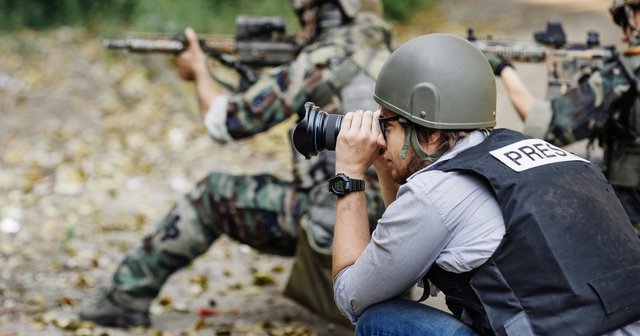
In today’s fast-paced world of social media, 24-hour news reporting, and information being shared at lightning speed, photojournalism plays a key role in the storytelling process. Whether it is capturing world leaders at international summits, highlighting issues such as war, famine, or climate change issues, or taking action shots of the leading sports stars, photojournalists capture moments that encapsulate emotion and reality.
In this post, we’ll look at what is photojournalism and the role it plays in the media. We’ll explore the impact it has on society, how significant it can be, and the role that a photojournalist has – either as a freelancer or within a large news organisation.
And if you are interested in career is a photojournalist, we’ll let you know what you should study – such as a Degree in Media Studies or a Master in Sports Journalism and Communications.
Photojournalism is a unique type of journalism that merges photography and journalism to capture significant moments and events. It's a powerful medium that allows us to witness stories, emotions, and issues from around the globe in a visually compelling way. Rather than relying solely on words, photojournalists use the lens of a camera to communicate and evoke emotions, making it a universal language understood by people of all cultures.
A photojournalist's job goes far beyond simply taking pictures. They are passionate storytellers, visual historians, and brave witnesses to events that shape our world. The role of a photjournalist will vary depending on where they work – some are freelance while others work for news outlets directly. Having said that, let’s look at some typical tasks a photojournalist does:
Because the digital landscape is in constant change and evolution, the photojournalism sector has to adapt. Today, with the rise of citizen journalism and the advancements in artificial intelligence in particular, photojournalists face certain challenges as they look to the future. These challenges include:
There are various ways to enter the photojournalism sector, and much will depend on what area you’d like to go into – news, sports, travel, for example. As well as having a passion for the camera, getting experience and building a portfolio is key. And at Universidad Europea, our academic model is based on a learning by doing approach. On the degree in journalism and international relations, you’ll have the opportunity to gain valuable work placements at prestigious media organisations. In addition, at our campus in Madrid, you’ll have access to outstanding media facilities including a photo editing lab.